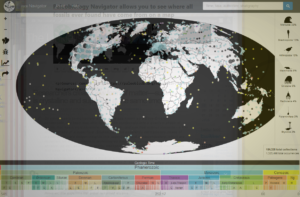A small yellow robot submarine, called Boaty McBoatface after a competition to name a new polar research ship backfired, is being sent on its first Antarctic mission.
Boaty, which has arguably one of the most famous names in recent maritime history, is a new type of autonomous underwater vehicle (AUV), which will be able to travel under ice, reach depths of 6,000 metres, and transmit the data it collects to researchers via a radio link.
Its mission will be to investigate water flow and turbulence in the dark depths of the Orkney Passage, a 3.5km deep region of the Southern Ocean. The data it collects will help scientists understand how the ocean is responding to global warming.
Source: Boaty McBoatface to go on its first Antarctic mission | World news | The Guardian
The real miracle is that the dour bastards at the Natural Environment Research Council (NERC) who opened a competition to name their new ship and then blasted the resultant name, have decided to use the chosen name for something at all, even if it is a sad little submarine.

